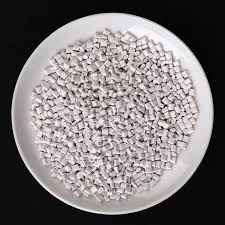Chemicals Used in Wastewater Treatment An Overview
Wastewater treatment is a critical process that ensures the recycling of water and the protection of the environment. As more industries and municipalities face the challenges of treating contaminated water, understanding the chemicals used in this process becomes increasingly essential. These chemicals serve various purposes, including disinfection, coagulation, flocculation, and pH adjustment, all aimed at making wastewater safe for discharge back into the environment or for reuse.
Chemicals Used in Wastewater Treatment An Overview
Coagulation and flocculation are essential processes in wastewater treatment that help remove suspended solids and particulates. Chemicals known as coagulants, such as aluminum sulfate (alum) and ferric chloride, are widely used in this stage. These chemicals destabilize particles in the water, allowing them to aggregate into larger clusters, or flocs. Once formed, these flocs can be easily removed through sedimentation or filtration. The careful selection and dosage of coagulants are crucial, as an insufficient amount may lead to ineffective removal of contaminants, while excessive dosing can result in increased sludge production and disposal issues.
chemicals used in waste water treatment

Another critical aspect of wastewater treatment is pH adjustment. The pH of untreated wastewater can vary significantly, and maintaining a neutral pH is essential for optimal performance of subsequent treatment processes, such as biological treatment. Quicklime (calcium oxide) and sodium hydroxide are common chemicals used to raise the pH of acidic waters, while sulfuric acid can be used to lower the pH of alkaline waters. Proper pH control ensures that the biological processes, critical for breaking down organic matter, can occur efficiently.
Nutrient removal is also a significant concern in wastewater treatment, particularly for nitrogen and phosphorus, which, if released into water bodies, can lead to eutrophication and harmful algal blooms. Chemicals such as ferric chloride can be employed not only for coagulation but also for phosphorus precipitation. Additionally, bioaugmentation and the application of microorganisms can facilitate nitrogen removal through processes such as nitrification and denitrification.
While chemicals are vital in enhancing the efficiency of wastewater treatment, their usage must be managed carefully to mitigate environmental impact. For instance, the residual chemicals left in treated water can affect aquatic ecosystems when discharged. Thus, many treatment plants are adopting more sustainable practices, including the use of bio-based coagulants and advanced oxidation processes, which reduce chemical usage and promote environmental safety.
In conclusion, the variety of chemicals used in wastewater treatment plays a crucial role in ensuring that treated water meets regulatory standards and is safe for discharge or reuse. As the focus on environmental sustainability intensifies, the wastewater treatment sector continues to innovate with safer and more effective chemicals and processes. Effective wastewater management not only safeguards public health but also protects the environment, making the understanding and application of these chemicals vital for the future of water resources.

